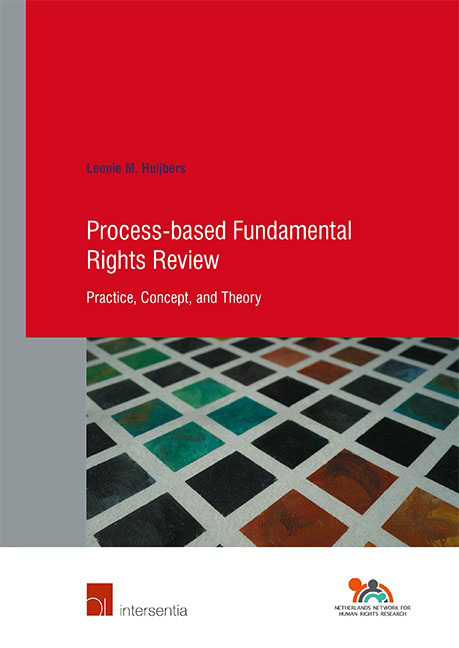Book contents
- Frontmatter
- Acknowledgments
- Contents
- List of Abbreviations
- INTRODUCTION
- PART I THE PRACTICE OF PROCESS-BASED FUNDAMENTAL RIGHTS REVIEW
- PART II THE CONCEPT OF PROCESS-BASED FUNDAMENTAL RIGHTS REVIEW
- PART III THE THEORY ON PROCESS-BASED FUNDAMENTAL RIGHTS REVIEW
- CONCLUSION
- Addendum: Questions for ECtHR Judges
- Summary
- Samenvatting
- Bibliography
- Official Documents
- Case-Law (by Jurisdiction)
- Case-Law (by Name)
- Curriculum vitae
- Human Rights Research Series
- Index
Chapter 2 - Process-based Fundamental Rights Review of Legislative Procedures
Published online by Cambridge University Press: 11 November 2021
- Frontmatter
- Acknowledgments
- Contents
- List of Abbreviations
- INTRODUCTION
- PART I THE PRACTICE OF PROCESS-BASED FUNDAMENTAL RIGHTS REVIEW
- PART II THE CONCEPT OF PROCESS-BASED FUNDAMENTAL RIGHTS REVIEW
- PART III THE THEORY ON PROCESS-BASED FUNDAMENTAL RIGHTS REVIEW
- CONCLUSION
- Addendum: Questions for ECtHR Judges
- Summary
- Samenvatting
- Bibliography
- Official Documents
- Case-Law (by Jurisdiction)
- Case-Law (by Name)
- Curriculum vitae
- Human Rights Research Series
- Index
Summary
INTRODUCTION
The legislative enactment procedure is generally set out in national constitutions, statutes, and other laws, or, in the international context, in treaties and regulations. Process-based review can be used to assess the compliance of legislative authorities with such procedural requirements. It has been employed by courts to determine whether local, regional, national, and international legislatures have fulfilled the requirements of balancing rights and of ensuring possibilities for participation in the political process. To determine whether fundamental rights have been violated, courts have also examined the deliberativenessand ‘ evidence-basedness’ of legislative enactment procedures, and they have shown willingness to protect the rights of minorities and indigenous peoples in political processes. The following section addresses examples from the US Supreme Court, the Supreme Court of Hawaii, the German Federal Constitutional Court, the South African Constitutional Court, the Colombian Constitutional Court, the European Court of Justice, and the European Court of Human Rights. It also briefly discusses the sensitive nature of judicial review of legislation, which includes the review of the legislative process in New Zealand, the UK, and Finland. This chapter ends with a short conclusion.
EXAMPLES OF REVIEW OF THE LEGISLATIVE PROCESS
US SUPREME COURT: CAROLENE PRODUCTS AND FULLILOVE
Starting with the US Supreme Court (USSC), the classic case of the review of the legislative enactment procedure is the Ballin judgment of 1892. The judgment concerned duties levied on the importation of cloth. In that case Justice Brewer considered the meaning of the requirement for the Senate and House of Representatives to take decisions by majority. The applicants challenged the validity of the import legislation and submitted that there was no majority present in the House when the law was passed. The USSC considered that it fell within the powers of the House to determine their internal procedures for verifying whether a quorum was present, and since the House had determined that there was, the legislation was held to be valid. There are other judgments, some concerning different procedural standards, in which the USSC Justices have also considered applying process-based legislative review.
- Type
- Chapter
- Information
- Process-based Fundamental Rights ReviewPractice, Concept, and Theory, pp. 27 - 44Publisher: IntersentiaPrint publication year: 2021



